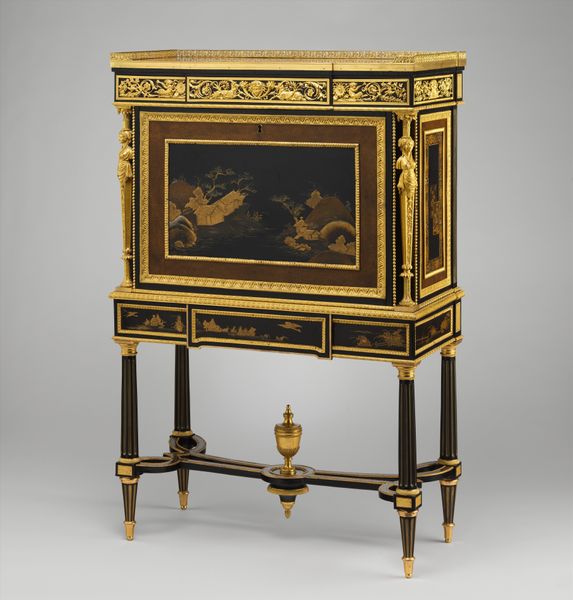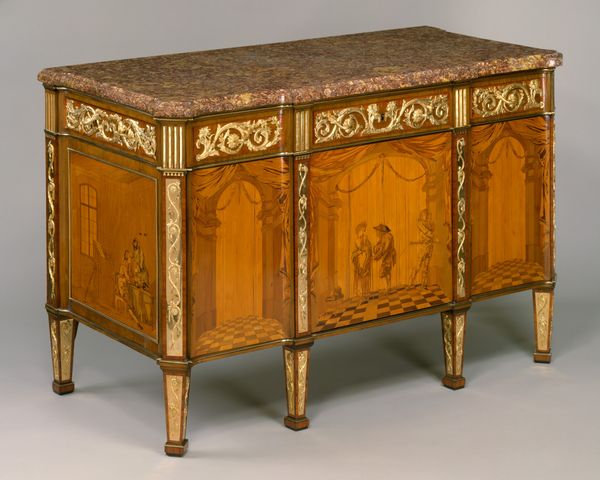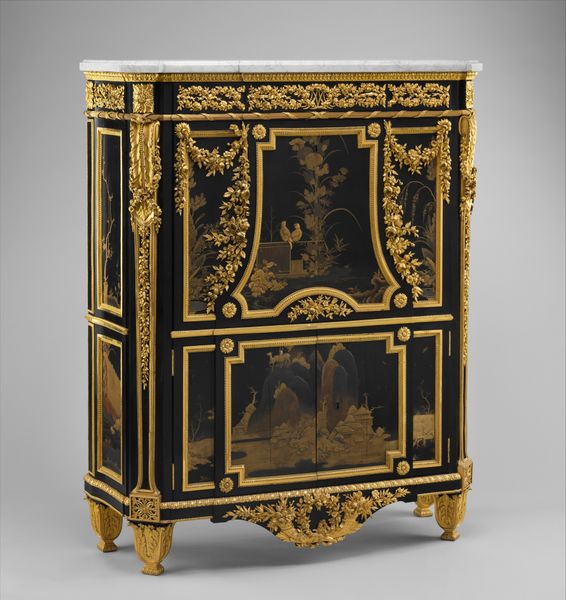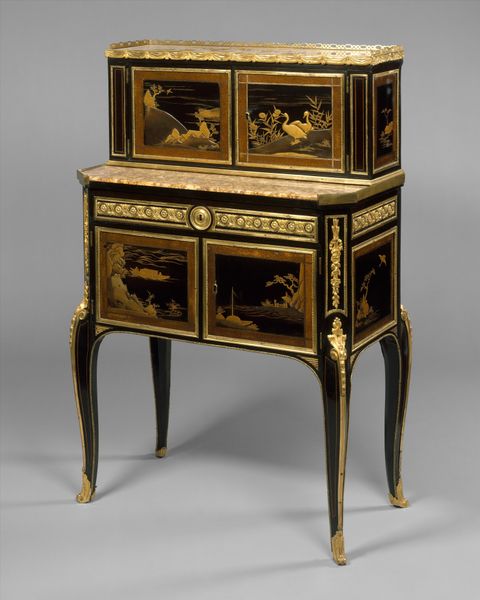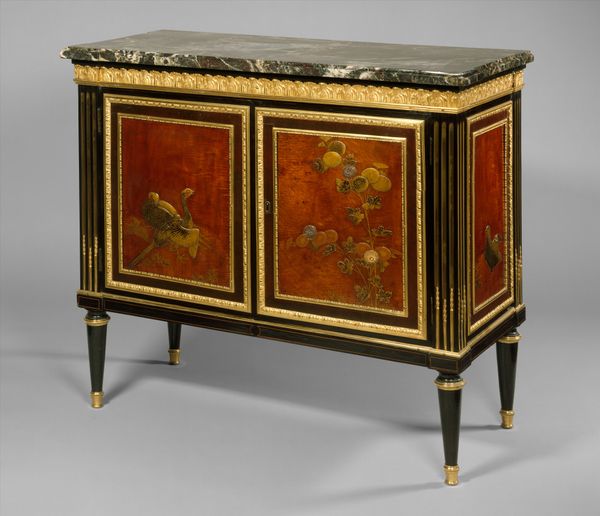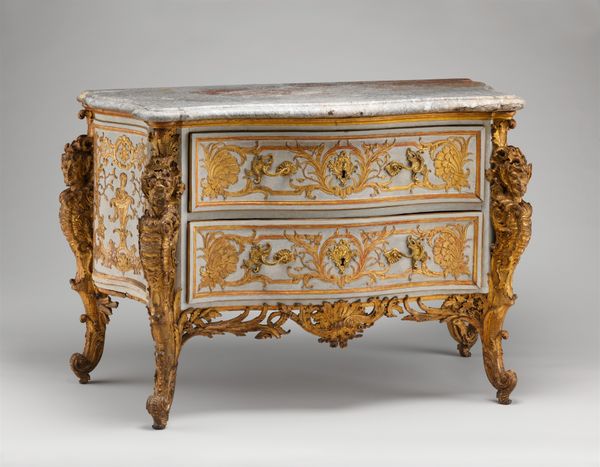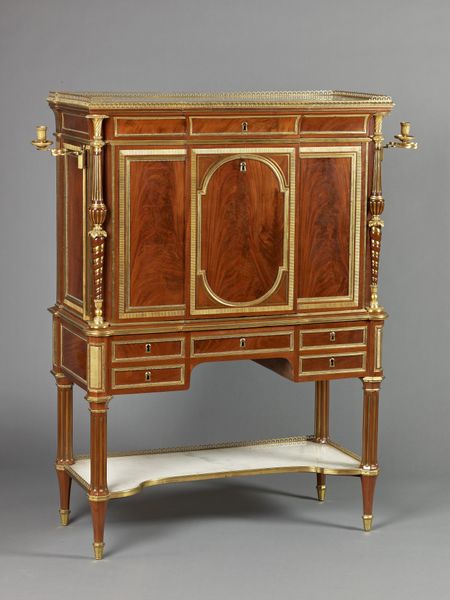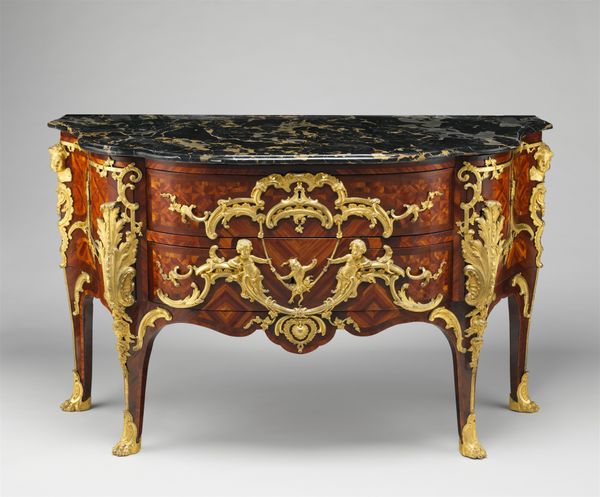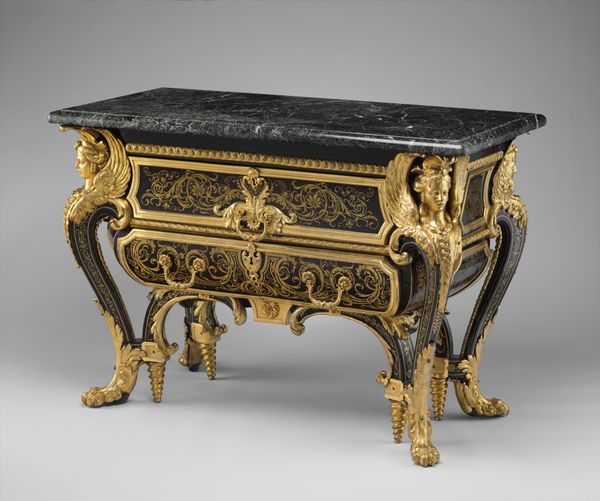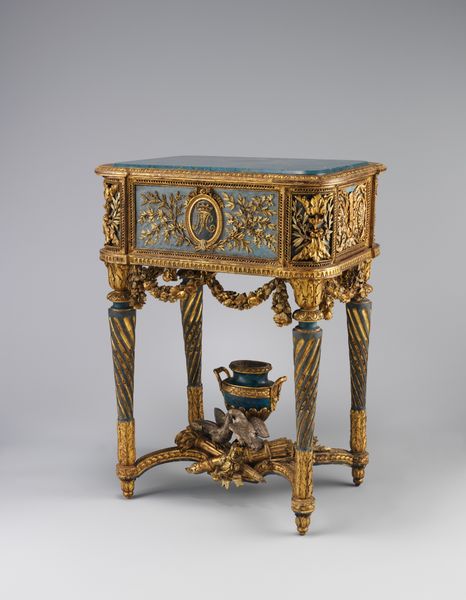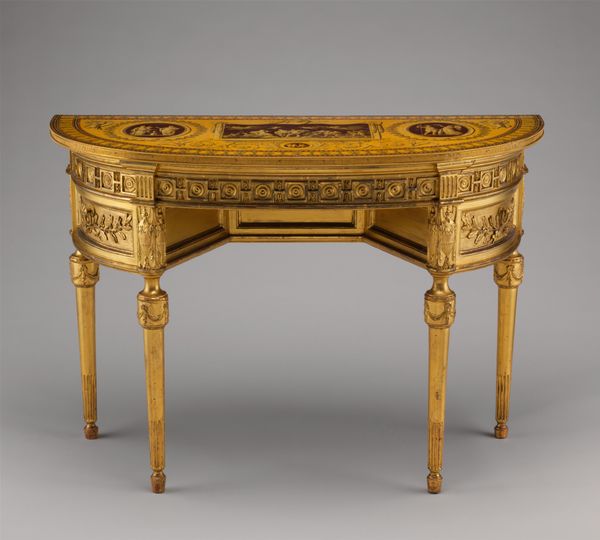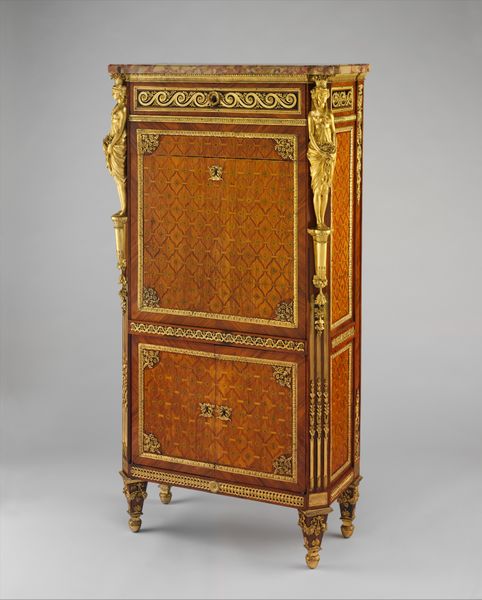
Commode (commode à vantaux) (part of a set) 1785 - 1795
0:00
0:00
Dimensions: H. 38-3/8 in. (97.5 cm); W. 58-5/8 in. (148.9 cm); D. 22-1/4 in.(56.5 cm)
Copyright: Public Domain
Curator: This is a commode à vantaux, or cabinet with doors, part of a set made by Adam Weisweiler between 1785 and 1795. It resides here at the Metropolitan Museum of Art. Editor: It strikes me as incredibly opulent. The contrasting black panels against the gilt bronze… it's a powerful statement of wealth and status, almost intimidating. Curator: Indeed. Weisweiler was a master ebeniste, a cabinet maker, working during a time of intense social and political upheaval. This commode, crafted from wood, with delicate carving and elaborate marquetry, reflects the complexities of 18th-century European society. Editor: And the marquetry itself... scenes reminiscent of the East, but filtered through a very European lens. This wasn't just about decoration; it's about trade, empire, and the exotic Other as a commodity, right? How are these woods acquired, processed, and fitted? Curator: Precisely! It speaks volumes about orientalism and the labor involved in acquiring and transforming these precious materials. Weisweiler used exotic woods, probably imported from colonies. He manipulated materials, such as gilt bronze and lacquered panels, in his Paris workshop that reflects a globalized trade. Editor: The cabinet doors feature detailed miniature depictions; it is very interesting to examine the social narrative embedded in these stylistic and material choices. There are human and animal subjects presented across an open-air setting and a variety of vegetation to create this scenic artwork. Curator: Right. Furthermore, furniture of this type frequently features images alluding to authority, success, and even virility. While pieces like this look stately in the museum, one has to acknowledge the class dimensions of domestic servitude involved, from those involved with its assembly, to those who lived within its proximity. Editor: It's this juxtaposition that’s so compelling—a beautiful object representing wealth acquired at the cost of widespread social inequity. Curator: Considering its presence today as a museum object, it certainly facilitates discourse about questions of cultural value, consumption, labor practices, and material production that shape historical studies. Editor: So next time when we look at this cabinet, imagine a society in upheaval where objects tell stories of wealth, craft, and inequality—and that’s where its relevance lives on today. Curator: Agreed, an object lessons can provide us when we interrogate materials of power to critically examine today's circumstances.
Comments
No comments
Be the first to comment and join the conversation on the ultimate creative platform.
